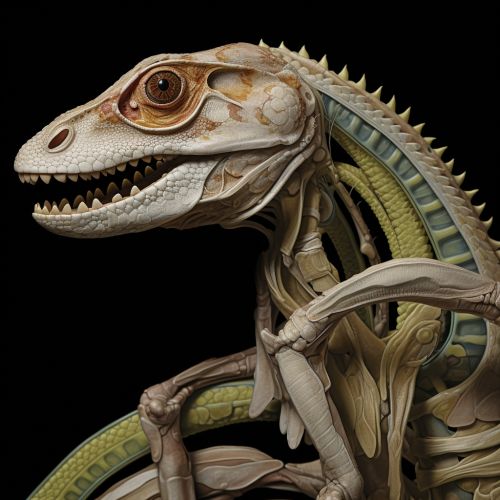Reptile Physiology
Introduction
Reptile physiology refers to the study of the physical and biochemical processes that occur within reptiles. This field of study is crucial for understanding the adaptations that have allowed reptiles to inhabit a wide range of environments on Earth.
Anatomy and Morphology
Reptiles exhibit a diverse range of physical forms and structures, reflecting their adaptation to various ecological niches. This section will delve into the key aspects of reptile anatomy and morphology, including the skeletal system, muscular system, and integumentary system.


Skeletal System
The reptilian skeletal system is characterized by its robustness and flexibility. Reptiles possess a vertebral column, which provides structural support and houses the spinal cord. The vertebral column is divided into several regions: cervical (neck), thoracic (chest), lumbar (lower back), sacral (pelvic), and caudal (tail).
Muscular System
The muscular system of reptiles is complex and highly specialized. It is responsible for movement and plays a crucial role in other physiological functions such as respiration and digestion.
Integumentary System
The integumentary system of reptiles, which includes the skin and its appendages, is unique among vertebrates. The most distinctive feature is the presence of scales, which provide protection and aid in water retention.
Physiology
Reptile physiology encompasses various systems, including the respiratory, circulatory, digestive, excretory, and reproductive systems. Each of these systems has evolved to support the reptile's survival in its specific environment.
Respiratory System
The respiratory system of reptiles is adapted for oxygen exchange in various environments, from terrestrial to aquatic. Most reptiles breathe using lungs, but some species also utilize cutaneous respiration, where oxygen is absorbed through the skin.
Circulatory System
The circulatory system in reptiles is a complex network of blood vessels that transports nutrients, oxygen, and waste products throughout the body. Unlike mammals, reptiles have a three-chambered heart, with two atria and one ventricle.
Digestive System
The digestive system in reptiles is designed to process a wide range of food types, from plant matter to animal prey. It includes the mouth, esophagus, stomach, intestines, and accessory organs such as the liver and pancreas.
Excretory System
The excretory system in reptiles is responsible for removing waste products from the body. It consists of the kidneys, which filter the blood, and the urinary bladder, which stores urine until it is expelled from the body.
Reproductive System
The reproductive system in reptiles is diverse, with some species laying eggs (oviparous), others giving live birth (viviparous), and some capable of both (ovoviviparous).
Thermoregulation
A key aspect of reptile physiology is thermoregulation, the process by which an organism maintains its body temperature within certain boundaries. Unlike mammals and birds, reptiles are ectothermic, meaning they rely on external sources of heat to regulate their body temperature.
Sensory Systems
Reptiles possess a range of sensory systems that allow them to interact with their environment. These include visual, auditory, olfactory, and tactile senses, as well as specialized sensory structures such as the Jacobson's organ in snakes.
Conclusion
Reptile physiology is a complex and fascinating field, offering insights into the adaptations that have allowed these creatures to thrive in diverse environments. From their unique skeletal structures to their specialized sensory systems, reptiles exemplify the power of evolution in shaping life on Earth.
